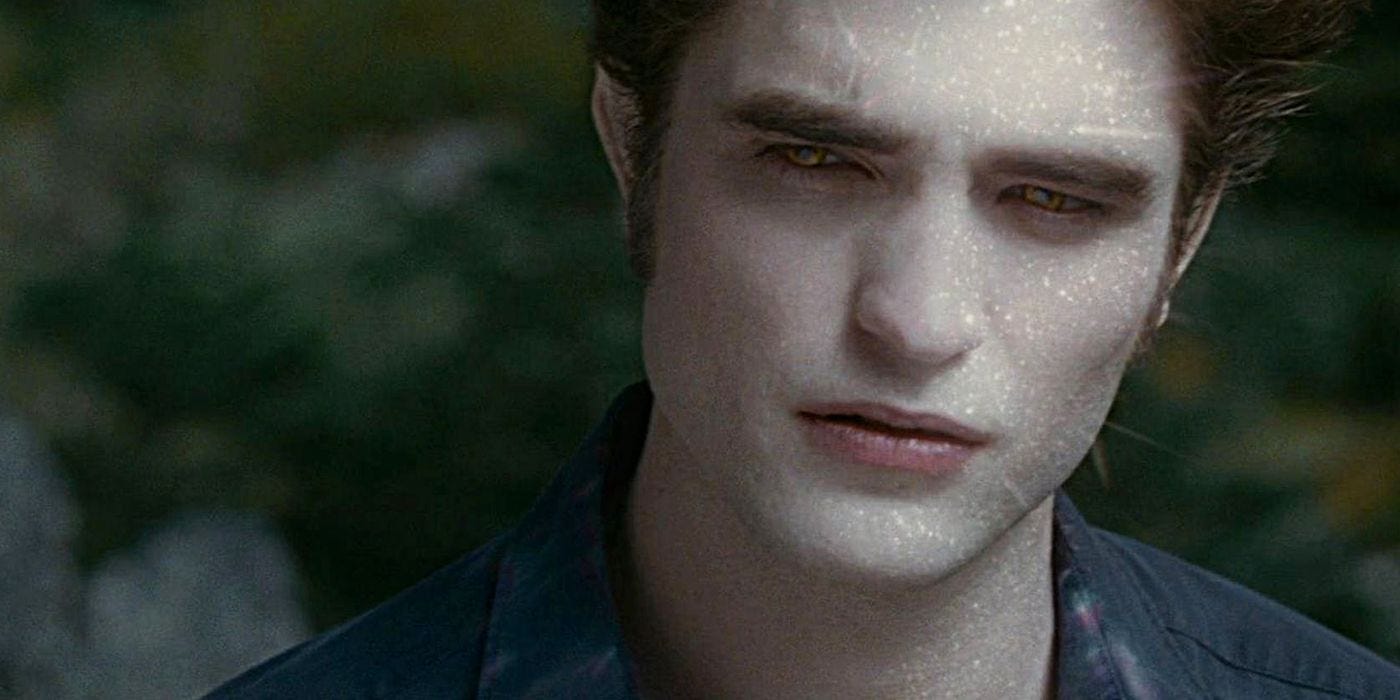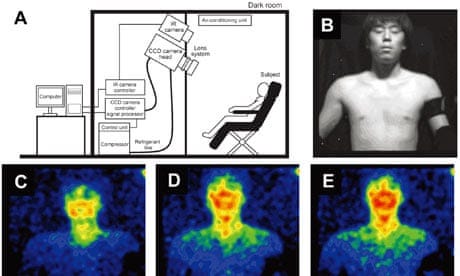Your "body glitters to the rhythm of the circadian clock."
That's right -- you actually glow. You just can't see it.
Some day I should tell you about the strange town I grew up in. Picture a map of the continental United States. In the upper left hand corner you see a peninsula sticking out away from Seattle and all known civilization like a vestigial tail that ends at the Pacific Ocean. The town I grew up in, Port Angeles, is where you would go on that stumpy little tail to take a ferry to Victoria, British Columbia. Over the course of my life, I’ve met many people who have been to my hometown. The overwhelming majority of them did so solely to take the boat to Canada.
Because of its remoteness, Port Angeles has attracted oddballs who wanted to get away from it all, whether poets (Tess Gallagher), novelists (Raymond Carver), or spies (the Soviet spy Christopher Boyce, AKA, the one portrayed by Timothy Hutton in 1985’s The Falcon and the Snowman). The town’s history includes the ridiculous (It’s Coast Guard station once attacked itself during WWII), the coincidental (John Elway was born there), the accidental (The first Al Qaeda terrorist plot in the United States was foiled there in 1999), and the ludicrous. Get this: Abraham Lincoln established Port Angeles as a townsite in 1862, prompting 19th-century townsfolk to call it “the Second National City.” When I grew up there in the 1970s and ‘80s, people actually thought that meant if Washington, DC fell, then Port Angeles would automatically become the nation’s capital. I prayed every night for DC’s safety. Port Angeles was not ready for that kind of attention.
But tie all that up in a rucksack and throw it into the bay, because as odd as that all seems to me, that is not why you probably have seen my hometown. Yes, you, sitting there, who have never been to Port Angeles, have a decent shot of having laid eyes on it. Remember the movie Twilight, in which a centuries-old vampire becomes inexplicably fascinated with a — checks notes — a 17-year-old high school student named — can this be right? — Bella Swan? Would “Pretty Bird” have been too on the nose? I’ll admit that “Bonnie Duck” doesn’t strike the ear cleanly, and “Hermosa Flamingo” sounds like a Carl Hiaasen character on quaaludes — that is, a Carl Hiaasen character — but “Bella Swan” sounds like a soap opera parody, and in truth, that’s pretty much what the Twilight series was, except with shirtless werewolves and sparkly vampires.
Here’s why people from around the world travel to Port Angeles to have their picture taken: In the first movie, Bella Swan bought her prom dress in Port Angeles.
Twilight came out when I was in my late 30s. I remember it well. I was standing in line to get tickets at a movie theater in Austin, and they were selling Twilight gear in the lobby. Mind you, I had not heard of the sparkly vampire soap opera, so seeing T-shirts from Forks High School in Austin caused an Inception-like folding of the space-time continuum in my head. Forks was a small town in my home county several thousand miles away. Forks? The logging town? Why is everyone acting like this is normal? For a second, I felt utterly unmoored, textbook insane. That feeling has persisted.
Eventually, I watched the movie, and as much as I appreciated the idea that the vampires chose the Olympic Peninsula for its abject remoteness and gloomy weather, I bailed when the the local high school kids went surfing. There’s no surfing in Forks. Everybody knows that. In a movie about vampires, I found the surfing a bridge too far.
It wasn’t that vampires lived in the cold, wet forests that encircled the small town where I grew up that I couldn’t buy. That actually made sense. Of course vampires would choose the Olympic Peninsula to hide out in, having very little chance of being discovered for the simple reason that no one ever goes there. And the fact that the vampires would sparkle in the sunlight? Well, of course they would choose to live there. The sun in a blue sky is a rarer sight than a vampire in Clallam County. That’s just good planning on their part.
S has been thinking about sparkly vampires lately, having recently found it intolerably stupid that an immortal being, sparkly or not, would choose a high school senior as his life partner. There are May-December romances, to be sure, but she cannot accept that someone with centuries of life experience would look at the dewey, blank slate of a 17-year-old’s face and think that makes any sense as a romantic option.
Perhaps it was due to her ramblings that the movie popped into my head when I ran across reports about a 2009 Japanese “analysis of physiologically relevant biophoton emission.” In terms you and I can understand, they wanted to study whether humans glowed, and it turns out we do.
You read that right. Humans glow. Which means you, reading this now, are glowing. You are bioluminescent just like Mosquito Bay in Puerto Rico, also known as Bioluminescent Bay. You are bioluminescent like some fish, bacteria, and jellies in the ocean and some fireflies and fungi on land. Your body, say those scientists, “glitters to the rhythm of the circadian clock.” Those Japanese scientists, man.
Your glow is hard to detect in the morning when your cortisol levels are the highest, but as your cortisol wanes, your glow increases, especially around your lips and mouth, peaking at the end of the afternoon. And we glow during the day, like the sparkly vampires. When the sky is dark, we go dark, too.
This is at the end of a typical work day, just as you’re headed to happy hour. Remember this next time you’re nervously heading to a drink. You’re glowing. Your smile is literally bioluminescent. This isn’t the same thing as infrared light produced by body heat, and no, I can’t explain your bioluminescence. Something, something, free radicals. Don’t ask me. I majored in Russian, and they don’t have a word for “fun.” You glow. Deal with it.
It’s not just you. Apparently almost all living things emit light. The problem is that we can’t see it. Our eyes were not built to pick up our own light. We glow but are doomed not to see it, just as we are doomed never to see ourselves how others do.
Our inability to see the good is a factory setting. Social scientists from Penn and a school in Boston have identified “the liking gap.”
While conversation may be humans’ most powerful tool for building relationships, it doesn’t work perfectly. In particular, it seems to give rise to a systematic bias that emerges especially in initial interactions: people often feel uncertain about what their conversation partners really think of them, which can lead them to underestimate how much they are liked.
We think people like us less than they do, and apparently this affects how we perform at work and at school. Our lack of confidence in the impression we make — our “glow,” if you will — hinders us from initiating plans with others or volunteering for new opportunities. All because we can’t see our glow.
Perhaps because of our inaccurate self-perception, we give more credence to bad news than to good news, even to the point of not noticing the good. The ozone layer is on track to be completely healed by 2066. The federal deficit has almost been cut in half. Several whale species are rebounding in the Seattle area. Gas prices are down a third since last summer. Consumer confidence is up all over the world.
But you didn’t know all that, did you, because your eyes evolved to see threats, not treats. You may not be able to see yourself glow, but there you go, glowing nonetheless. And the idiot drilling farts into your couch (OK, that’s me) is glowing, too. Even Trump probably glows, but you’d never be able to see it under all his pancake makeup. The whole world is glowing. There’s good news everywhere. You just have to train your eyes to look for it.
But people surfing in Forks, Washington? Yeah, that’s still dumb.
Jason Stanford is the co-author of NYT-best selling Forget the Alamo: The Rise and Fall of an American Myth. His bylines have appeared in the Washington Post, Time, and Texas Monthly, among others. Follow him on Twitter @JasStanford.
Thanks to Noom, I lost 40 pounds over 2020-21 and have kept it off since then. Click on the blue box to get 20% off. Seriously, this works. No, this isn’t an ad. Yes, I really lost all that weight with Noom.
We set up a merch table in the back where you can get T-shirts, coffee mugs, and even tote bags now. Show the world that you’re part of The Experiment.
We’ve also got a tip jar, and I promise to waste every cent you give me on having fun, because writing this newsletter for you is some
Buy the book Texas Lt. Gov. Dan Patrick banned from the Bullock Texas History Museum: Forget the Alamo: The Rise and Fall of the American Myth by Bryan Burrough, Chris Tomlinson, and myself is out from Penguin Random House. Out in paperback now!






Sublime writing. I'll read anything JS writes.
Ok, I think surfing off the coast of the Olympic Peninsula is totally stupid. It's not just that you need a wet suit (although that right there tells you surfing here is a bad idea), but you need s wet suit with a certain rating because of the coldness of the water and air. Recently someone died while surfing between Port Angeles and Forks. His surfing buddies pulled him out but not in time.